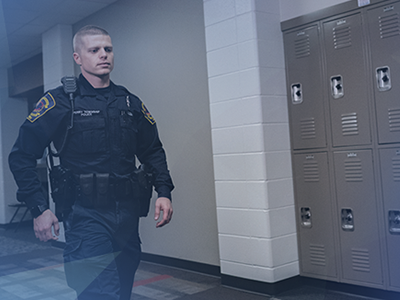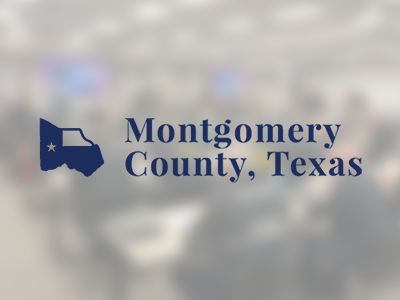Putting Power in the Hands of the People with an Emergency Information App
Customer Success Story
Putting Power in the Hands of the People with an Emergency Information App


Carrie Carlson,
Sr. Emergency Management Coordinator
Chicago OEMC
Industry
Challenges Solved
Customer Details
Chicago, Illinois, has more than three million people and a large tourist population year-round. Emergency managers wanted a mobile safety app that could quickly alert the community to impending severe weather and embrace the cultural diversity and multiple languages spoken in the third largest city in the United States.
Solution
Do you use a desktop computer at home? I’d bet the answer is no—and even if you do, I bet you only use it when it’s absolutely necessary. Web-based apps, on the other hand, are everything these days. From paying bills to reading the news to ordering food, web-based apps are a part of our daily routines. In fact, some quick research shows there are over 6.3 billion smartphone users across the world and 1.14 billion tablet users—with no signs of a slowdown. That same research shows that the average American checks their phone 262 times per day with 88% of that time spent on apps. In 2022 alone, there were 218 billion app downloads.
We can’t even imagine a world where we can’t access critical information on our phones—and as an emergency preparedness professional, I don’t want to. I’ve worked in the emergency preparedness field for nearly a decade, operating in both the public and private sectors, and joined the Chicago Office of Emergency Management and Communications (OEMC) in December 2021. My job is to identify different events, outreach opportunities, and speaking engagements where we can discuss everything related to emergency preparedness. Our objective is two-fold: to underscore that emergency preparedness starts with the individual and to ensure residents have the appropriate information to effectively and proactively prepare for an emergency. It’s a challenge to spread this message in a city as large as Chicago, which has more than three million people and a large tourist population. There’s the potential for all sorts of emergencies in our communities and we have to account for everything from seasonal events to bizarre weather to multiple languages and cultural variances.
Communities Are Changing, And The Mediums People Trust Are Changing, Too
I see OEMC as the bridge between our outreach team and the emergency management department, and that interconnectivity is what makes my job so fun. I’m not just talking about emergency preparedness to coworkers—I’m bringing emergency management out of a basement office and into our neighborhoods and communities. But these communities are changing, and the mediums people trust are changing, too. People don’t watch TV like they used to, and they’re definitely not listening to the radio for emergency updates. To do my job effectively, I needed to pivot to where people congregate and get educated: mobile apps.
Making Emergency Preparedness Cool
One of the first things I noticed after signing on with Chicago OEMC was the agency’s online presence—or lack thereof. There wasn’t much activity or engagement; even the OEMC Facebook page only had 5,000 likes.
We needed to be more dynamic on social media, but we also needed to get more people interested in emergency preparedness as a whole. We had to stimulate more conversations about the importance of it and promote emergency preparedness resources where young people spend their time. More importantly, we had to make it look cool. When I looked at these needs together, the answer became clear: Why not introduce an app that informs and helps citizens prepare at the same time?
Information buried on a static webpage can be hard to find. People don’t bother spending 10–15 minutes hunting for what they need. Instead, I aimed to create an app people would want to add to their daily browsing habits. Just like checking the weather or their bank account balance, I wanted Chicago residents and visitors to have an app that presents timely, useful information in a way that’s clear, simple, and easy to locate.
This project wasn’t the first time I had an idea for an app and brought it to life in the state of Illinois. In 2017, I helped McHenry County Emergency Management Agency create an app similar to what we needed in Chicago. The app was a phenomenal resource during Covid-19, and proved to be especially valuable when the pandemic was at its most chaotic. Today, their app is still going strong as a one stop shop for information, and I knew the same idea would work for OEMC, too.
Promoting Preparedness Via Rave Mobile Safety
There was a strong case for deploying a web-based app for emergency preparedness. The next question wasn’t how to do it, but rather which partner could help us develop it.
The City of Chicago had already built a great relationship with Rave Mobile Safety, a Motorola Solutions brand, through the use of Rave Alert, a mass notification system. Using this relationship as a springboard, I realized we could expand our portfolio with Rave’s AppArmor as Chicago’s all encompassing broadcast platform for information. I knew it was the right choice for our use case; I just had to get everyone else on board.
Although AppArmor is used in most of the nation’s colleges and universities, it is a niche product in a niche field. And let’s face it, convincing others to embrace new technology can be tough — especially within an emergency preparedness department that has relied on more traditional outreach methods. Saying “trust me” sometimes isn’t enough to convince others, so I was very fortunate that I could showcase the previous app I helped launch and provide data to support similar development in Chicago.
My supervisor approved the project, and we began engaging in a lot of discussions about what the solution should look like.
Seeing Our Plans Take Shape
We agreed on the basics: creating an easy-to-use and accessible custom-branded app with the Chicago OEMC logo and color scheme. We wanted the interface to be simple to navigate for people of all ages, non-English speakers, and persons with disabilities. We also wanted to create engaging content that served tourists and Chicago residents alike. To do this, I took off my emergency manager hat and thought about it from an individual’s perspective asking myself, “What would I want to know? How can I plan for emergencies in advance?”
We landed on a few foundational ideas to get started:
MAPS: Whether you’re a tourist, a newcomer, or a lifelong Chicago veteran, comprehensive digital maps help people figure out how to get from point A to point Z while avoiding detours.
WEATHER: We included our direct national weather service partners (as well as a live weather feed) to help users make informed decisions about their daily activities in a city that experiences four distinct seasons.
EMERGENCY MANAGEMENT: We wanted people to know what’s going on in Chicago at a glance, so we added emergency preparedness updates as well as real-time information about road closures, towing hazards, special events taking place, and more.
EMERGENCY ALERTS: We already had Rave Alert for mass notifications, but we wanted to rebroadcast those alerts through our new app too. Users don’t have to sign up or share their email address to receive alerts, and they can turn notifications on or off depending on their needs.
CHI SAFE WALK: AppArmor allowed us to create Chi Safe Walk so that users can temporarily share their location with someone else. The app shows a planned walk path and a blue dot identifying the user. If anything goes wrong or the dot stops moving, the person on the other end can collect information and contact the proper authorities. It’s a great way to help civilians feel comfortable and confident when traveling alone.
We wanted to make an all-encompassing information hub that acted as a single source of truth for all our citizens and visitors. Not only did we meet our basic expectations, but we exceeded them in many ways.
Prior to releasing our app in Feb 2023, we launched a social media campaign that garnered us 2,000 downloads immediately and approached 3,000 downloads within the first month. We continue to add information as it becomes available or when recommendations surface, and I haven’t heard any negative feedback, which I figure is a pretty good sign.
Customizable Contingency Plans Help Everyone Make Better Emergency Decisions to Keep Themselves And Their Loved Ones Safe
In the future, we expect to connect people directly to emergency services. We also want to expand on the resources available to our users. Our goal is to create a step-by-step process where people can create their own emergency preparedness plans and share them with those they love. Think of it as a customizable contingency plan for people who don’t have much experience with emergency prep. These resources will help everyone make better emergency decisions to keep themselves and their loved ones safe.
As we expand on our public-facing app, we are also working on adding another layer to our existing app, this one for employees. The employee version will incorporate up-to-date training, peer support resources, internal emergency notifications, and threat information. We are currently working with Rave to make the login process as seamless as possible through a secure sign-in. Our goal is to launch this progressive personnel tool by the summer of 2023. Rave has supported OEMC’s project vision since the very beginning. People outside of emergency preparedness don’t always know or understand what we need, but Rave gets it, and so does our liaison Sarah Moen in the Customer Success department. The entire Rave team understands the emergency management mission. They are open to new ideas and ways to personalize technology, and Sarah has been simply amazing every step of the journey. That’s the kind of partner you want when it comes to public safety.
Emergency Preparedness in The Palm Of Everyone’s Hand
The Chicago OEMC app is only one of four in the state from a government authority, but I’m working on spreading the word to other agencies and encouraging them to take the leap. Everyone uses apps to get and send information, and emergency management teams should tap into consumer preferences. Trust me, developing and deploying an app is not as overwhelming as it sounds.
Information Is Power, And There Is Power in Preparedness
Information is power, and there is power in preparedness. Apps offer emergency management professionals like me the chance to provide accurate information via today’s most dominant, direct communication channel so people can make informed decisions. By understanding and embracing modern day preferences, we are successfully delivering important information into the public’s hands. Nothing makes me happier than that.
More From Rave Mobile Safety
Talk With An Expert
Discover our prepackaged solutions or configure a package that’s right for your community, company, K-12 schools and higher education system. Learn how you can be up and running in days, take advantage of unlimited emergency usage, and benefit from unbeatable performance and customer satisfaction.




